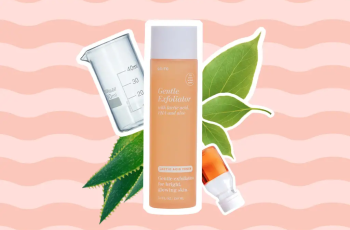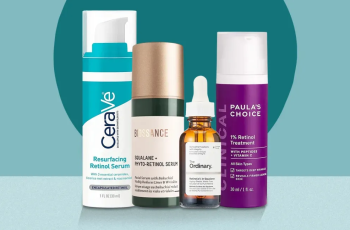
.webp)
.webp)
.webp)
How Often Can You Use a Mandelic Acid Peel? A Complete Guide to Safe, Effective Exfoliation
.webp)
.webp)
.webp)
Chemical peels have long been a favorite among skincare lovers, dermatologists, and beauty professionals for their powerful results.
.webp)
.webp)
.webp)
They help transform dull, textured, and congested skin into a clearer, brighter, and more even-toned complexion.
.webp)
.webp)
.webp)
One of the gentlest yet highly effective chemical exfoliants available today is mandelic acid, a star player in the world of skin renewal.
.webp)
.webp)
.webp)
Whether you’re new to mandelic acid or already love how it makes your skin feel, a common question arises: How often can you use a mandelic acid peel?
.webp)
.webp)
.webp)
Is it something that can be incorporated into a regular skincare routine? And if so, how often is too often?
.webp)
.webp)
.webp)
In this in-depth guide, we’ll explore the different types of peels, how mandelic acid compares to other exfoliants, the best way to use it, and how often it’s safe to apply a mandelic acid peel based on your skin type and goals.
.webp)
.webp)
.webp)
Understanding Chemical Peels: Superficial, Medium, and Deep
.webp)
.webp)
.webp)
Before diving into mandelic acid specifically, it’s helpful to understand the broader category of chemical peels and how they vary in strength and application.
.webp)
.webp)
.webp)
1. Superficial Peels
.webp)
.webp)
.webp)
These are the most common type of chemical exfoliants and often include alpha hydroxy acids (AHAs) like glycolic, lactic, or mandelic acid.
.webp)
.webp)
.webp)
They work by exfoliating only the outermost layer of skin (the epidermis).
.webp)
.webp)
.webp)
They are often gentle enough to use at home.
.webp)
.webp)
.webp)
They produce minimal side effects—some tightness, light peeling, or dryness may occur.
.webp)
.webp)
.webp)
Downtime is minimal, making them ideal for busy routines.
.webp)
.webp)
.webp)
Consistent use is required to maintain results, as they deliver gradual improvements.
.webp)
.webp)
.webp)
2. Medium Peels
.webp)
.webp)
.webp)
These go deeper into the skin, reaching the upper dermis.
.webp)
.webp)
.webp)
Often performed in salons or dermatology clinics.
.webp)
.webp)
.webp)
Involve stronger acids like trichloroacetic acid (TCA).
.webp)
.webp)
.webp)
Can lead to noticeable flaking, redness, and recovery time (a few days to a week).
.webp)
.webp)
.webp)
Best suited for deeper pigmentation, acne scars, or more advanced signs of aging.
.webp)
.webp)
.webp)
Recommended every 6 to 12 months, not frequently.
.webp)
.webp)
.webp)
3. Deep Peels
.webp)
.webp)
.webp)
This is the most intensive form of chemical peel.
Requires clinical supervision, sometimes with local anesthesia.
Can involve phenol or high-concentration TCA.
May cause significant peeling, redness, and a 2-week or longer recovery period.
Offers long-lasting results but should only be done once every few years.
Not suitable for all skin types, especially deeper skin tones due to risks of hypopigmentation.
What Is Mandelic Acid?
Mandelic acid is a type of AHA (alpha hydroxy acid) derived from bitter almonds. It is recognized for being one of the mildest and most well-tolerated exfoliating acids, making it ideal for sensitive skin and beginners.
Here are some key facts about mandelic acid:
Larger molecular structure than glycolic or lactic acid, meaning it penetrates the skin more slowly and causes less irritation.
Gently dissolves the bonds between dead skin cells, encouraging cell turnover.
Contains antibacterial properties, making it effective for treating acne and clogged pores.
Targets hyperpigmentation, melasma, and post-inflammatory marks.
Improves signs of aging, including fine lines, dullness, and uneven texture.
Suitable for use on sensitive skin, even rosacea-prone complexions.
Known as a “summer peel” because of its low risk of photosensitivity—though SPF is still essential.
How Often Can You Use a Mandelic Acid Peel?
General Recommendation: Once Every 1–2 Weeks
For most people, especially those new to chemical peels, it’s safe to start using mandelic acid peels every 1 to 2 weeks. This frequency offers a good balance between reaping the benefits and avoiding over-exfoliation.
The key benefits of using mandelic acid regularly include:
Reduced breakouts and pore congestion
Brighter, more even skin tone
Refined skin texture and minimized fine lines
Improved clarity and glow
Less downtime than stronger acids
For Sensitive or Reactive Skin: Every 2–3 Weeks
If you have sensitive skin, rosacea, or a compromised skin barrier, spacing peels out to every 2 to 3 weeks is ideal. Always do a patch test first, and consider starting with a lower-strength formulation (5–10%).
For Oily or Acne-Prone Skin: Weekly Use May Be Tolerated
If your skin is oily, acne-prone, or resilient, you may tolerate weekly mandelic acid peels. This can help manage active breakouts, reduce oil production, and fade post-acne marks more quickly.
However, even for oily skin types, daily or overly frequent use can lead to:
Disrupted skin barrier
Dehydration
Increased sensitivity
Peeling or flaking
Professional-Grade Peels: Every 4–6 Weeks
Stronger professional-grade peels containing 20% or more mandelic acid should be done once a month under the guidance of a licensed esthetician or dermatologist. These may cause more noticeable shedding and should be followed with barrier-repairing products.
Can You Use Mandelic Acid Every Day?
Yes, but with caution.
Some over-the-counter products—like toners, serums, or cleansers—contain low concentrations (2–5%) of mandelic acid and are formulated for daily use. These are generally safe if your skin is accustomed to acids.
However, using peel-strength mandelic acid (10–20%) daily is not recommended, as it may:
Strip your skin’s natural oils
Cause redness or irritation
Increase photosensitivity
If you choose to use mandelic acid daily, make sure to:
Pair it with hydrating ingredients like hyaluronic acid, ceramides, or panthenol
Use a gentle, non-stripping cleanser
Apply moisturizer immediately after exfoliation
Avoid other strong actives (like retinoids or benzoyl peroxide) unless advised by a professional
Use SPF 50 daily
Building a Routine Around Mandelic Acid
Here’s a simple weekly skincare routine featuring mandelic acid:
Evening (Once a Week or Biweekly – Peel Night)
Cleanser: Use a gentle, pH-balanced cleanser.
Mandelic Acid Peel: Apply the peel to clean, dry skin. Follow the product’s instructions—usually left on for 5–10 minutes.
Neutralize or rinse (if needed).
Hydrating Serum: Use something with hyaluronic acid or panthenol.
Moisturizer: Apply a nourishing, fragrance-free moisturizer.
No retinol or acids this night.
Morning After a Peel
Be gentle with your skin.
Avoid direct sun exposure.
Apply broad-spectrum SPF 50, even if staying indoors.
Avoid makeup for the day, if possible.
Who Should Avoid Mandelic Acid Peels?
People with broken skin, cuts, or active infections.
Those with eczema or severe rosacea flare-ups—consult your dermatologist first.
Anyone using prescription retinoids or acne treatments—space out active ingredients.
If you’re pregnant or breastfeeding, speak to your doctor before use.
Final Thoughts: Slow and Steady Wins the Glow
Mandelic acid is a true multitasker in skincare: it’s gentle enough for regular use yet effective enough to improve several common skin concerns. Whether you’re battling breakouts, fading dark spots, or looking to refresh your skin’s glow, mandelic acid peels are a safe and effective option.
To summarize:
Use mandelic acid peels every 1–2 weeks for general maintenance.
Those with sensitive skin should space applications every 2–3 weeks.
For oily, acne-prone skin, weekly use may be ideal.
Daily use is possible with low-strength products, but monitor your skin for dryness or irritation.
Always wear SPF, especially when using exfoliating acids.
When in doubt, consult a dermatologist or licensed skincare professional.
Ready to Level Up Your Skincare?
Want more help customizing your routine? Follow us on Instagram @TheSkinSchool or browse our blog for more deep dives into actives, acids, and everyday skincare tips. Your skin deserves science-backed care—with a gentle, informed approach.
Let us know if you’d like this turned into a printable weekly skincare calendar with peel schedules or a visual routine builder. I’d be happy to create one!

